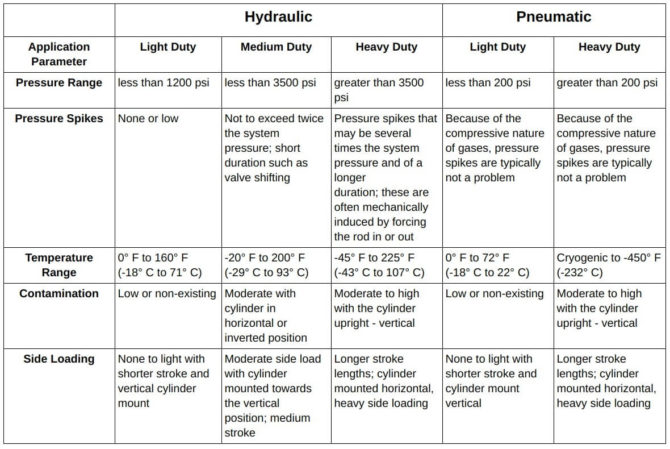Home » Technical » Hydraulic & Pneumatic Applications
Hydraulic & Pneumatic Seals
Hydraulic and pneumatic sealing environments require a wide array of dynamic seals and wipers. Despite the wide variety of styles and geometry these seals are categorized in three general types: seals for reciprocating applications, seals for rotary applications, and seals for oscillating applications.
General Application Guidelines
Selection of proper materials is critical to a well designed hydraulic / pneumatic sealing system. There are a number of factors to be considered when selecting materials.

It is not uncommon for the requirement of a sealing system to fall into multiple duty columns. When this situation occurs you should select the majority of the components from the lesser duty range. You must also consider the fluid being sealed and the stroke speed.
Source: Parker EPS 5370 Table 1-1
Seal Characteristics To Consider
- Typical Physical Properties (based on ASTM, SAE, AMS or aerospace standards)
- Durometer – a measure of hardness based on the Shore A scale
- Modulus – a measure of extrusion resistance
- Ultimate Tensile Strength – a measure of toughness or wear resistance
- Ultimate Elongation – a measure of the breaking point when cured material is fully stretched
- Resilience – a measure of the “rebound” of a material after being compressed
- Compression Set – a measure of the ability of a material to return to it's original shape after compression at a given temperature and pressure
- Chemical Compatibility
- Thermal Capability and Extrusion Resistance
- Friction and Wear Resistance
- Storage, Handling and Installation criteria

